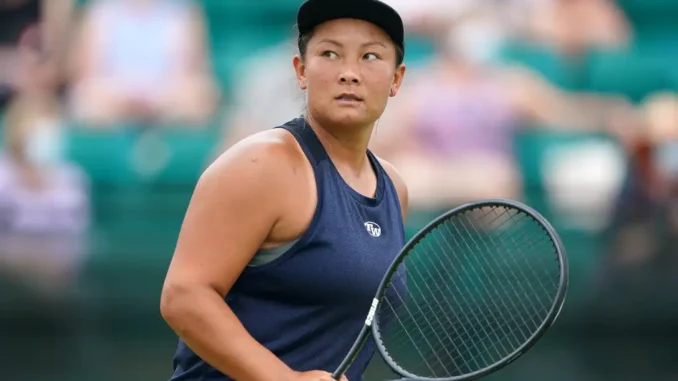
In a dramatic turn of events, British tennis player Tara Moore, once the nation’s top-ranked women’s doubles player, has been handed a four-year suspension from professional tennis following a doping controversy that has rocked the sport. The 32-year-old, who reached career-high rankings of No. 145 in singles and No. 77 in doubles, tested positive for the anabolic steroids nandrolone and boldenone during a tournament in Bogota, Colombia, in April 2022. Initially cleared by an independent tribunal in December 2023, which ruled that contaminated meat was the source of the banned substances, Moore’s reprieve was short-lived. The Court of Arbitration for Sport (CAS) has now upheld an appeal by the International Tennis Integrity Agency (ITIA), overturning the earlier decision and imposing a ban that will sideline her until the start of the 2028 season, with credit for 19 months already served under provisional suspension.
Moore’s journey through this ordeal has been nothing short of a nightmare. Provisionally suspended in June 2022, she endured “19 months of lost time and emotional distress,” as she described it, watching her reputation, ranking, and livelihood “slowly trickling away.” The initial tribunal’s ruling offered hope, determining that she bore “no fault or negligence” after consuming contaminated meat. Moore, a vocal advocate for fair treatment in doping cases, returned to competition in April 2024, competing in ITF and WTA 125 events, with her doubles career showing particular promise. However, the ITIA’s appeal, backed by independent scientific advice, challenged the contamination claim. “In this case, our independent scientific advice was that the player did not adequately explain the high level of nandrolone present in their sample,” said ITIA chief executive Karen Moorhouse, emphasizing that the decision to appeal was “not taken lightly.” The CAS panel agreed, ruling that Moore “failed to establish that the ADRV (Anti-Doping Rule Violation) was not intentional.”
The verdict has reignited debates about fairness and transparency in tennis’s anti-doping system, especially in light of recent high-profile cases. Moore has been outspoken about perceived inconsistencies, particularly criticizing the lenient punishments handed to world No. 1 Jannik Sinner and former No. 1 Iga Swiatek. Sinner, who tested positive for clostebol in March 2024, accepted a three-month ban, allowing him to return for the 2025 French Open, while Swiatek served a one-month suspension for trimetazidine, attributed to contaminated melatonin. “I guess only the top players’ images matter,” Moore wrote on social media, echoing sentiments from players like Liam Broady and Denis Shapovalov, who have questioned whether high-profile players receive preferential treatment due to their access to top legal teams.
The ruling has profound implications for Moore’s career. At 32, a ban extending into her mid-30s could effectively end her professional aspirations, particularly as she currently ranks No. 864 in singles and No. 187 in doubles. Her emotional response to the initial suspension highlighted the toll on her mental health and financial stability, and this latest setback has drawn sympathy from fans and peers. “It’s going to take more than 19 months to rebuild, repair and recuperate,” she lamented after her 2023 clearance, a sentiment that resonates even more now. The tennis community remains divided, with some arguing that the ITIA’s rigorous appeal process ensures accountability, while others, including Nick Kyrgios, who called tennis integrity “awful,” see systemic flaws.
As Moore faces an uncertain future, the case underscores broader challenges in tennis’s anti-doping framework. The sport has grappled with high-profile scandals, from Maria Sharapova’s 15-month ban for meldonium to Simona Halep’s reduced nine-month suspension for roxadustat. Moore’s situation, contrasted with the shorter bans for Sinner and Swiatek, fuels perceptions of inequity. With the CAS dismissing her cross-appeal, Moore’s fight appears over for now, but her case will likely continue to spark discussions about consistency, transparency, and the human cost of doping violations in tennis.
Leave a Reply